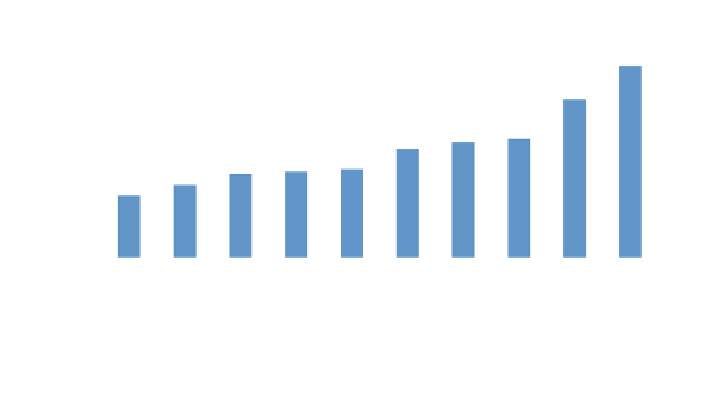Environmental Engineering Reference
In-Depth Information
Fig. 5.7 Daily water use in selected EU countries in 2012 (liters per day) (Biswas and Kirchherr
2012
)
Ireland, Hungary and Sweden) already use the two-part tariffs for the supply of
water, while Greece and Turkey have applied the increasing-block tariffs. To show
the variety of pricing practice, we present three case studies in EU member states:
Ireland, France, and Spain.
In addition, water usages also widely differ among EU countries (see Fig.
5.7
).
In 2012, the average person in Spain used around 265 liters per capita per day,
followed by the Netherlands with 218 per capita per day and France with 164 liters
per capita per day. The more sustainable European water consumers are Lithuania,
Estonia, and Belgium with 85, 100 and 115 liters per capita per day, respectively
(Biswas and Kirchherr 2012). As noted by Biswas and Kirchherr,
these huge
consumption differences are mainly due to different water pricing regimes across
Europe that European policy makers have failed to harmonize despite the Directive.
Pricing is the single most powerful policy tool to alter water consumption patterns
and users
“
'
behavior.
5.7.2.1 Ireland
Ireland
s water sector consists of local authorities and group water schemes. About
92 percent of Ireland
'
is population is served by a total of 34 local authorities, while
8 percent of the population is served by group water schemes (Brady and Gray
2013
). The pricing mechanisms for each local authority are different. In Ireland,
residential charges have not been imposed since 1991 as full capital costs for the
provision of water services to the residential sector are met by the Exchequer
through indirect taxation, while the nonresidential sector is charged for water
consumption and the charges are based on meter reading, including a
'
xed charge
and a constant volumetric charge (Brady and Gray
2013
). Ireland was ranked third






































Search WWH ::

Custom Search